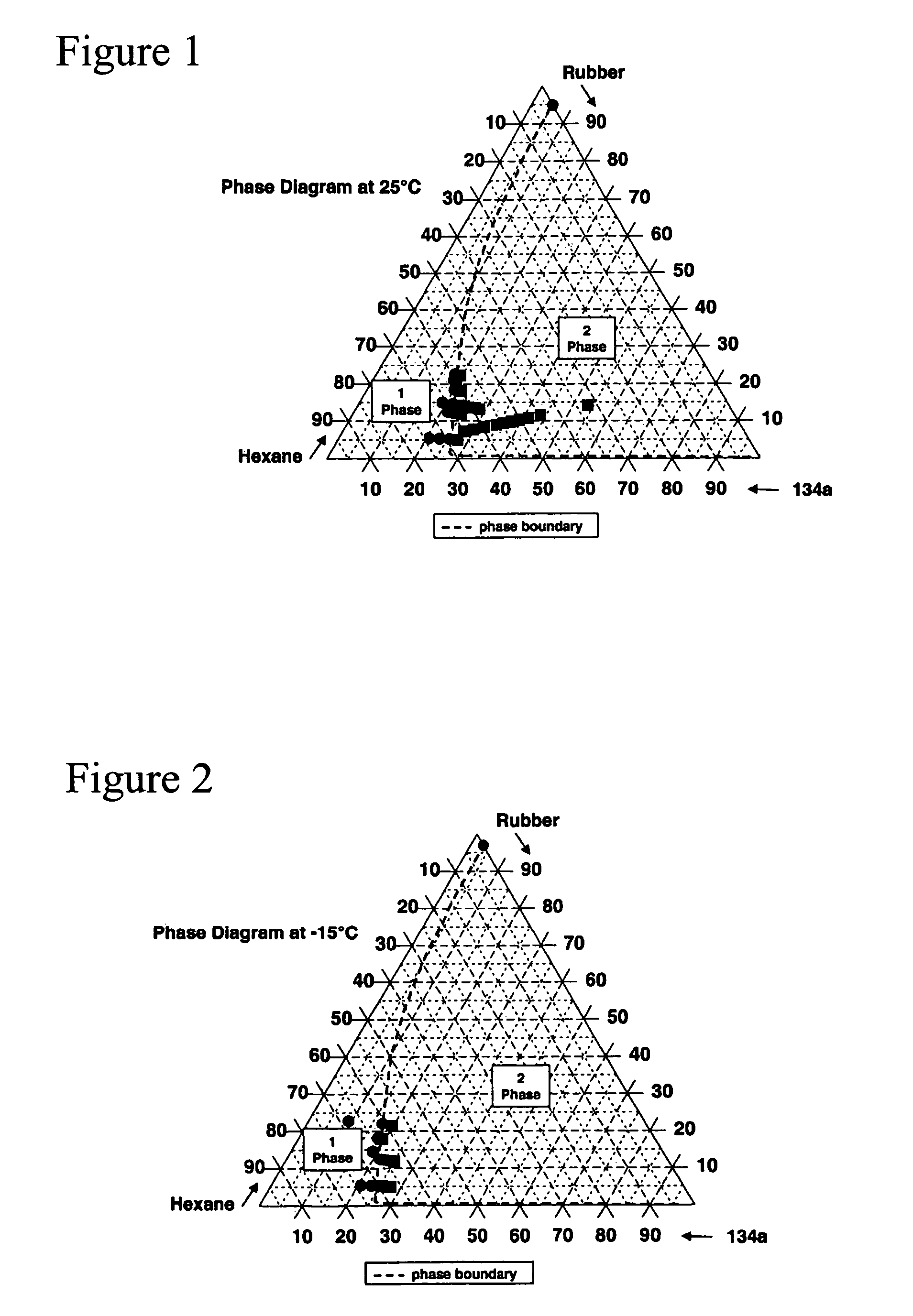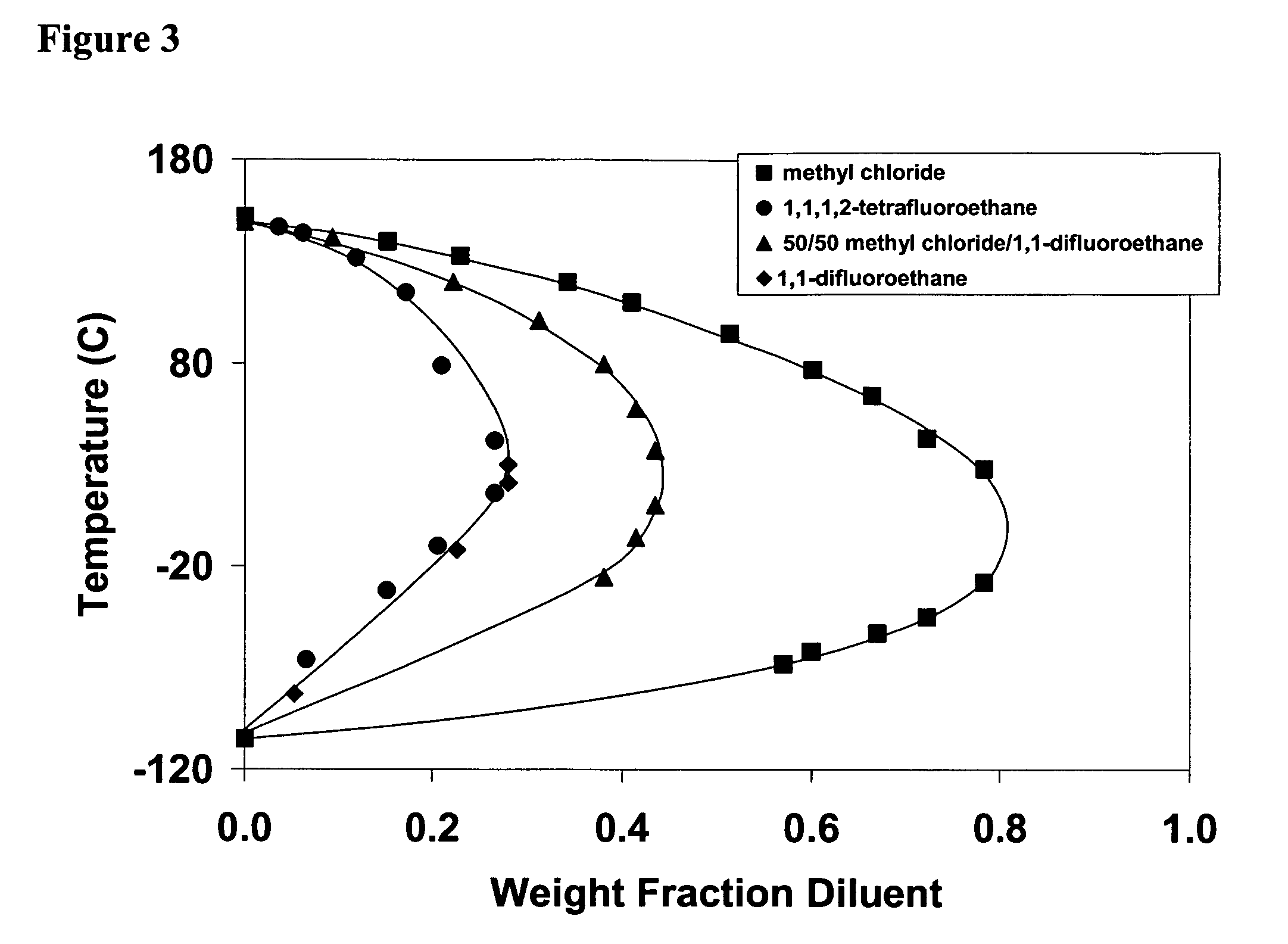Phase separation process utilizing a hydrofluorocarbon
a phase separation and fluorocarbon technology, applied in the direction of hydrocarbon purification/separation, hydrocarbons, hydrocarbon purification/separation, etc., can solve the problems of patents unsatisfactory, slurry temperature rise, and limit the practical concentration of slurry that can be used in most reactors
- Summary
- Abstract
- Description
- Claims
- Application Information
AI Technical Summary
Benefits of technology
Problems solved by technology
Method used
Image
Examples
examples
[0176]In the current invention, the phase behavior of butyl rubber cements were determined on polymer solutions prepared from solvent mixtures of ULB hexane (ultra-low-benzene hexanes, obtained from ExxonMobil Chemical Co.) and comparative methyl chloride (obtained from Air Products) or 1,1-difluoroethane (152a, Technical Propellants) or 1,1,1,2-tetrafluroethane (134a, obtained from National Refrigerants or DuPont). Methyl chloride, 152a and 134a are generically referred to as the phase separating agent (PSA) or the diluent in the description for the purposes of teaching the method by which example data was collected. The experimental errors for all the experimental data collected were within ±2.5% of the experimental data.
[0177]The butyl rubber used for all experiments was a commercially available 268 grade or a 2222 grade from ExxonMobil Chemical Co. The 268 rubber was prepared for the measurements by dissolving it into hexane and filtering the resulting solution to remove insolub...
PUM
| Property | Measurement | Unit |
|---|---|---|
| vol % | aaaaa | aaaaa |
| temperature | aaaaa | aaaaa |
| temperature | aaaaa | aaaaa |
Abstract
Description
Claims
Application Information
 Login to View More
Login to View More - R&D
- Intellectual Property
- Life Sciences
- Materials
- Tech Scout
- Unparalleled Data Quality
- Higher Quality Content
- 60% Fewer Hallucinations
Browse by: Latest US Patents, China's latest patents, Technical Efficacy Thesaurus, Application Domain, Technology Topic, Popular Technical Reports.
© 2025 PatSnap. All rights reserved.Legal|Privacy policy|Modern Slavery Act Transparency Statement|Sitemap|About US| Contact US: help@patsnap.com


